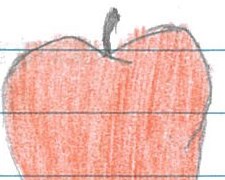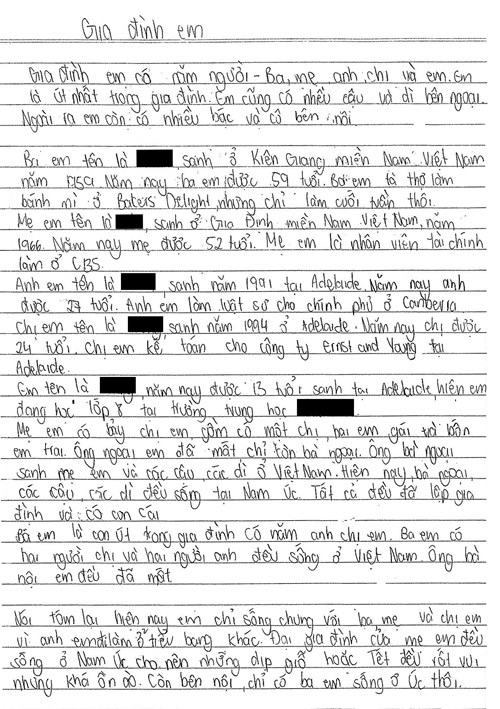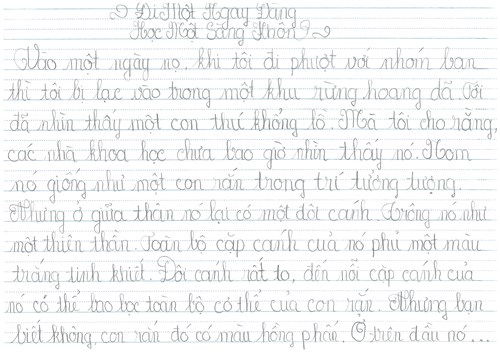Languages: Vietnamese - Satisfactory - Years 7 and 8 (Year 7 entry)
Portfolio summary
This portfolio of student work shows that the student uses written and spoken Vietnamese to interact with peers and the teacher to exchange personal information, describe feelings, and express preferences (WS1, WS6, WS8). When participating in collaborative activities and classroom routines, the student uses modelled language to complete transactions, to ask and respond to questions, to follow instructions, to request support and permission, and to make arrangements. When interacting, the student uses the features of the sound system, including tones, to pronounce words and expressions (WS8), and forms affirmative, negative, interrogative, and imperative sentences. The student locates specific information in a range of texts and presents information and ideas related to personal, social and natural worlds in spoken, written and digital forms using modelled language structures (WS1, WS3). The student shares their responses to a range of imaginative texts by identifying and describing key elements and expressing opinions. The student creates or adapts familiar imaginative texts for a range of audiences, using common adverbs of sequence to organise and link ideas (WS1, WS4, WS5, WS6, WS7). The student uses personal pronouns, nouns, adjectives, verbs, adverbs and conjunctions (WS1, WS4, WS5, WS6, WS7). The student applies rules of the Vietnamese writing system to spell familiar words, including tone markers (WS1, WS3, WS4, WS5, WS6, WS7). The student translates and interprets short texts, identifying words that are not easily translated and creates bilingual texts to support their own learning and for the school community. The student compares ways of communicating in Vietnamese and English and explains how their own biography influences their cultural identity and ways of communicating (WS2).
The student identifies the tones of spoken and written Vietnamese (WS2, WS3, WS5, WS7, WS8). The student identifies Vietnamese sound–letter relationships, the formation of consonants clusters, diphthongs, triphthongs and vowel–consonant combinations (WS2, WS3, WS5, WS8). The student compares the structural and language features of Vietnamese and English in personal, informative and imaginative texts, identifying audience and purpose (WS2). The student describes how language use varies according to setting and context (WS2). The student provides examples of how the Vietnamese language has changed over time, identifying Vietnamese words that have emerged through contact with other languages (WS2). The student identifies cultural practices that are embedded in language use and communication styles, such as use of the terms dạ/thưa to express politeness and respect (WS2).






